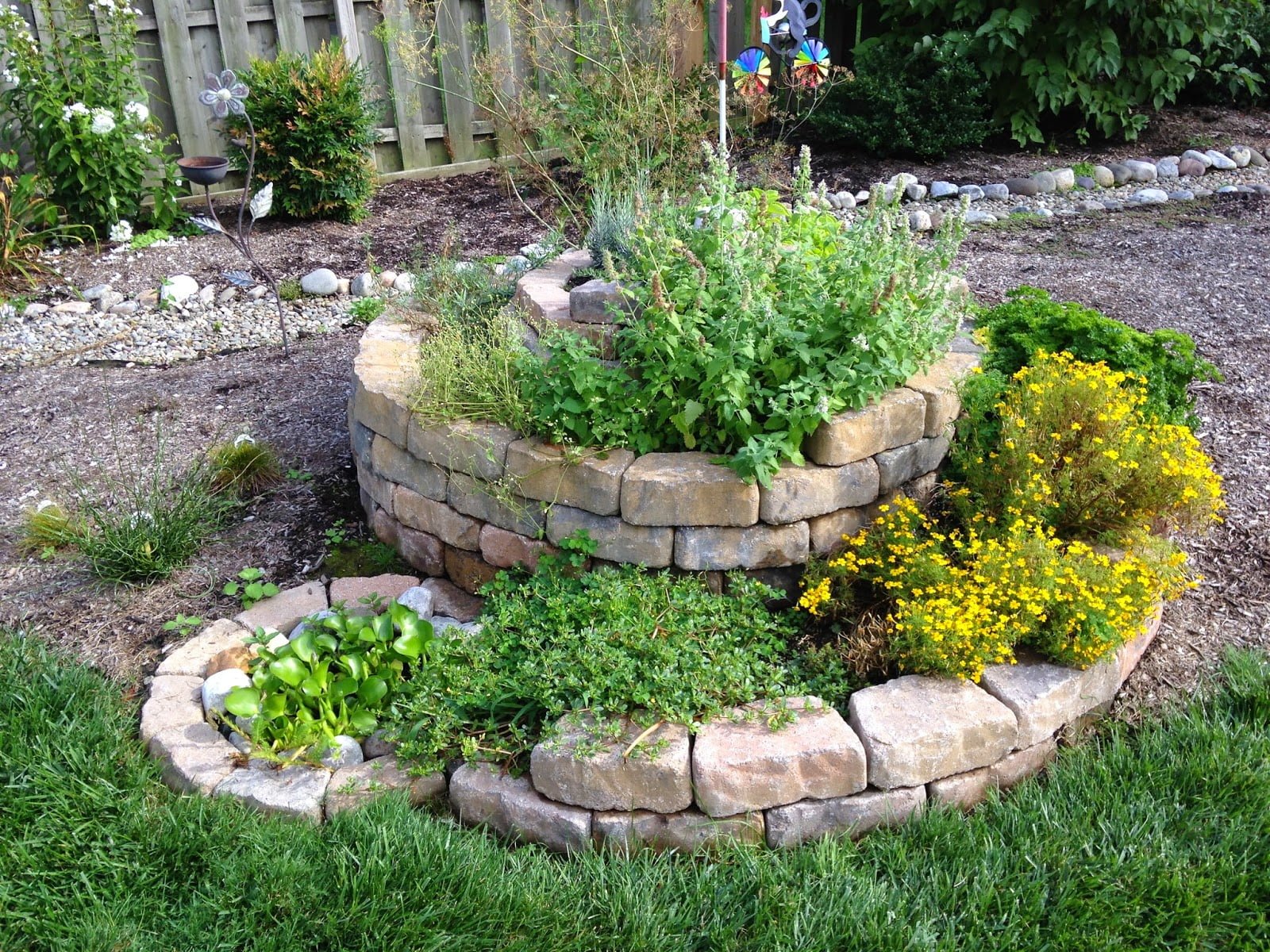
Raised bed gardening, in which edible or ornamental plants are grown in elevated garden boxes rather than directly in the ground, is a popular alternative to traditional methods.
In a raised bed environment, plants enjoy improved soil conditions, better drainage and more effective weed and pest control. At the same time, gardeners get an increased yield and easier access to their plants.
Herbs are especially well-suited for this type of growing environment, and one creative application is the herb spiral. Spiral bed gardening adds a creative and distinctive element to any home, and would make a delightful addition to your garden.
The Herb Spiral Is the Perfect Growing Environment
This spiral garden is shaped like a snail shell, starting at a central point and gradually widening in a continuous curve. The inner tip of the spiral has the highest elevation, and the planting space gradually slopes downward as the curve widens. This allows some of your plants to enjoy a northern exposure while those that need more sunlight are planted on the south slope.
The soil is driest at the top (just right for rosemary) but becomes more moist in the lower portions (ideal for bay leaves). A spiral can be sized to fit any area, and because of the shape of the structure and the elevation of the soil, the herbs can be more densely planted. Also, your plants can be situated in varying soil depths, according to their needs.
Materials Needed for an Herb Spiral
Construction materials used for this type of raised bed gardening can vary, but all spiral gardens require certain basic elements. Cardboard or a weed mat provides a base for the structure and helps stop weeds and pests from invading the soil. The walls can be built with purchased or found bricks, rocks or natural stones.
Organic matter, such as compost, straw or mulch and soil will form the bed of the garden, and fertilizer can be used to add nutrients to the soil. And, of course, you will need any herb seeds or seedlings that you plan to grow.
Creating the Spiral
Herb spirals look quite impressive, but they are actually rather simple to build. To start, identify the central point for your spiral garden and place a stake in the ground there. Tie a string to the stake, then extend the string and draw a circle in the soil to mark the outer edge of the structure.
Next, lay the base to cover the entire circle, plus an extra foot beyond the edge for weed protection.
Once the base is in place, start laying your rocks, bricks or other building materials around the outer edge of the circle. Gradually work inward, creating a spiral shape, adding additional vertical layers to the walls until you reach your desired height. Next, add the organic materials and soil to bring the planting level to just below the exterior wall. Finally, plant your herbs, and prepare to enjoy!
This versatile growing environment is a fun and efficient way to augment your garden, and to ensure that you have fresh herbs for all your kitchen creations.
You can find dozens of creative designs online, and you’ll find all the materials you need at Millcreek Gardens in Salt Lake City. Stop by today and let our friendly, knowledgeable staff help you get started with raised bed gardening.


